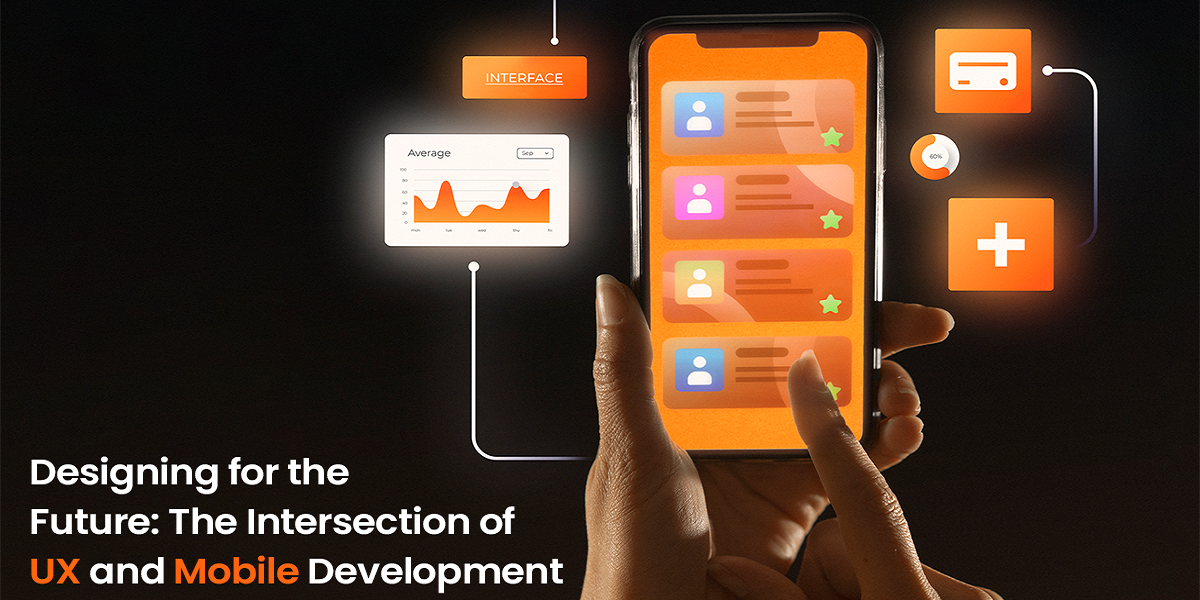
A 100ms delay in load time can result in users abandoning a website. Ten years ago, a "great mobile experience" meant buttons that didn’t misfire and text that scaled properly. Today? Users want apps to predict their needs, seamlessly shift between their
foldable phone and smartwatch, and load instantly—even on spotty subway Wi-Fi.
Mobile devices have evolved from mere communication tools into deeply personal companions—shaping habits, enabling transactions, and defining user experiences across nearly every dimension of modern life. From checking the weather to managing entire businesses, people no longer just “use” our phones—people live through them. Every swipe, tap, and scroll now carries emotional and cognitive weight. This deep integration has elevated the expectations placed on mobile apps, making flawless experiences the baseline, not the bonus.
Yet, designing for mobile is no longer just about creating responsive screens or intuitive layouts. That era is behind us. Today, UX in mobile development is a moving target—shifting constantly under the weight of technological evolution, user behavior changes, and platform diversification. Designers and developers must anticipate where the world is going, not just react to where it is now.
This means building adaptable, context-aware, and ethically sound mobile ecosystems. It means rethinking how to design and develop as two sides of the same coin—not silos that pass pixels back and forth. UX is no longer the frosting on the cake—it’s baked into the architecture, from the codebase to the cognitive load on the user.
Even with the best of intentions, most mobile apps fail long before users ever use them. The cause is usually in the way disconnected UX and mobile app development processes stay throughout the initial stages of product planning. When design is an afterthought added to development, and not a core component of product architecture, friction is unavoidable—and user experience pays the price.
Misaligned Goals: Designers are intent on appearance and usability without regard for technical constraints, so UI components can't be easily incorporated into the app's architecture.
Performance Ignorance: Designs that perform well under static, stand-alone testing circumstances don't perform so well in real-world application due to inadequate optimization and a lack of concern for loading time, memory consumption, and data processing.
Lack of Testing Real-World Situations: User behavior is dynamic, and testing under only perfect conditions or a predetermined set of interactions leads to rough experiences that break down in the face of dynamic user interactions or network loss.
Uncoordinated Prototypes and Code: If designers lock in prototypes without constant collaboration with developers, key tweaks to enhance usability or performance are lost in the final release.
Delayed Iteration Feedback: Without ongoing feedback between development and UX, both teams are proceeding based on outdated assumptions, creating products that are aesthetically pleasing but not optimal to use.
Misalignment also extends to performance considerations. Gesture-based navigation systems may be smooth in isolated test cases but falter with inconsistent patterns of user behavior. These fumbles trace back to a lack of common language and tools across design and engineering.
At this point, good UX design should not only be focused on appearance—it has to predict behavior, environmental factors, and performance impediments. That kind of vision can only happen when design and development work in constant feedback loops, with prototypes developing together with technical realization, not ahead or behind.
Defective collaboration is among the most prevalent—and most avoidable—murderers of mobile UX before an app even gets a chance to see a launch screen. Future-proofing starts not with features, but with alignment in fundamentals between mobile app development and experience strategy.
The landscape of mobile app development is transforming at a pace that defies traditional design methodologies. The digital ecosystem is moving beyond the predictable rectangles of smartphones into a world of foldables, dual-screen tablets, rollables, and even screenless interfaces like smart rings, wearables, and voice-activated devices. Each of these platforms presents unique UX challenges, not just in terms of screen size, but in interaction mode, posture detection, multitasking context, and device behavior fluidity. Where a single device may support several form factors (folded, unfolded, tabletop), designers and developers can no longer treat layout as a static artifact; it’s a living, adaptive construct that must respond to both environment and intent.
It’s not just about making a button look good at different breakpoints—it’s about creating design systems that respond to spatial orientation, gesture input, power constraints, and hardware feedback in real-time. For instance, foldables require hinge-aware layouts that respond dynamically to opening angles, while smart glasses require interfaces based on spatial anchoring and low-latency gesture tracking. Designers must now partner closely with developers to create componentized experiences that behave consistently, even when divorced from their original visual context. This is where declarative UI frameworks like Jetpack Compose, SwiftUI, and Flutter shine—enabling interface logic that adapts seamlessly to new and emerging environments.
Moreover, the notion of a “screen” is rapidly becoming abstract. With the rise of ambient computing, UX in mobile development must account for experiences that span multiple devices simultaneously—or in some cases, exist entirely without a screen. Think about an AI assistant that starts a flow on your smartwatch, continues on your AR glasses, and completes it via voice command through a smart speaker. In these cases, design is about intent continuity, environmental awareness, and anticipatory action, not just visual fidelity. It means building multi-modal interaction schemas where input and output are no longer bound to a single device or sense. Designing for this world means understanding not just how users interact, but where, why, and under what constraints—making UX not just a design role, but a systems engineering challenge.
In traditional UX design, layouts are tailored for specific resolutions. But as mobile screens become fluid and unpredictable, our approach must evolve.
- Constraint-based layouts that respond to space availability rather than device assumptions.
- Scalable design tokens and variable-based theming within frameworks like Flutter or Jetpack Compose.
- Emphasis on content-first UI, where visual hierarchy adapts, but core experiences remain stable.
By abstracting UX decisions from screen dimensions, designers create interfaces that naturally scale to devices yet to be invented.
From a mobile app development perspective, future-proofing begins in the codebase. Developers should:
- Use dynamic layout builders instead of hardcoded views.
- Implement responsive UI logic, using constraints, gestures, and container-based design models.
- Build state-aware components that can fluidly transition between split-view, fullscreen, or floating layouts.
This tight integration of logic and interface is where UX in mobile development truly shines—it’s not just about what’s seen, but how it behaves in unpredictable environments.
As devices become ambient and screenless (think: wearables, voice-first devices), UX must shift toward designing interactions, not interfaces.
- Define intent flows instead of visual flows—anticipating what users want, when they can’t see.
- Use multimodal feedback (sound, vibration, haptics) to replace visual affordances.
- Prioritize graceful failure in unclear contexts—screenless UX is inherently error-prone, and resilience is key.
In a digital ecosystem saturated with flashy trend reports and annual UX predictions, it's easy for product teams to chase superficial features while overlooking the systemic shifts redefining mobile experiences from the inside out. Most design fads like dark mode toggle placements, rounded corners, or flat icon sets come and go without fundamentally impacting user outcomes. But beneath the surface, a new class of trends is quietly reshaping UX in mobile development at the architectural level. These aren't just stylistic upgrades, they represent structural transformations in how interfaces respond to user context, how energy and privacy are factored into design choices, and how cross-platform continuity and emotional intelligence are being woven into mobile workflows.
From invisible interactions that leverage ambient data to predictive UIs that adjust behavior mid-task, these shifts demand a collaborative rethinking of how developers, designers, and even AI systems co-own the user experience. Recognizing and integrating these undercurrents is no longer optional, it’s the difference between creating an app and crafting an ecosystem-aware mobile product built for long-term relevance.
Users are burned out by overly aggressive personalization. Instead, UX design is shifting toward lightweight, context-aware nudges.
- Swap rigid user flows for intent-based mini-journeys.
- Use local data (recent taps, scroll behavior) rather than deep behavioral profiling.
- Surface suggestions silently, don’t force AI-driven decisions on the user.
With more computing happening on-device (AI, AR), users are becoming sensitive to energy consumption.
- Developers are building energy-aware mobile app components that auto-throttle in low-power conditions.
- Designers are creating animation logic that adapts based on the user’s battery mode or system performance.
- This intersection of mobile app development and UX is redefining what “optimization” really means, it’s not just performance, it’s sustainability.
UX is getting emotionally intelligent. With user consent, apps can now respond to emotional cues, not just actions.
Adjust tone, color palettes, or content density based on detected frustration.
This advancement also adds new responsibilities in UX design ethics, how do we avoid misreading emotion or manipulating behavior?
The future of UX in mobile development isn’t defined by any single tool, platform, or discipline, but by the convergence of all of them. As the boundaries between designers and developers, interfaces and infrastructure, and software and physical environments blur, we’re entering an era where experience architecture is as much about orchestration as it is about creation. Designers are no longer just wireframing interfaces, they’re shaping system behaviors, defining logic flows, and collaborating directly in component-based code.
Developers, in turn, are engaging with user psychology, accessibility heuristics, and interaction affordances as core pillars of their build process. This fusion is also being accelerated by emerging platforms like spatial computing, AI-assisted development, and device-agnostic UIs, which demand holistic thinking rather than role-bound silos. The “app” itself is evolving from a self-contained entity into a modular experience layer, dynamically assembled across environments, devices, and moments in time.
In this new paradigm, interaction is no longer just about tapping or swiping on a screen, it’s about intent detection, state continuity, and ambient responsiveness, whether the user is speaking, gesturing, or even just approaching a device. Designing for that world requires not just tools, but an entirely new mental model of UX as fluid, contextual, and symbiotic with development.
Instead of downloading full apps, users engage with embedded micro-UX moments—in OS cards, chat threads, voice replies, or wearables.
- Developers are creating interface fragments designed to live outside their parent app.
- Designers must think modularly, ensuring consistency and usability when a UX component is consumed in isolation.
This shift changes both how we build apps and how we define mobile app development itself; it’s no longer about the app, but the outcome.
AI is no longer just a backend tool; it’s becoming a co-pilot in UX design and development.
- Smart layout engines suggest UI based on usage heatmaps.
- Developers use AI to optimize navigation, predict feature drop-offs, and auto-adjust UI logic.
Yet the UX in mobile development must remain human-centric, AI should enhance usability, not obscure it.
Real-time behavior tracking, auto-testing, and instant rollbacks are now extending to the UX layer.
- Implement UX observability tools to monitor interaction health.
- Build feedback-driven design loops, where user behavior adjusts layouts dynamically.
- Treat UX changes like code—track versions, test A/B flows, and roll forward/back if metrics dip.
The future of UX in mobile development isn’t about guessing the next device or trend, it’s about designing for continuous change. As interfaces become dynamic, and user behavior drives real-time adaptation, UX must evolve from static visuals to living systems built in close sync with development workflows. When UX design is versioned, tested, and rolled out like code, it becomes resilient, ready to adjust with context, scale with platforms, and respond to intent. At this intersection, design isn't just aesthetic; it becomes operational, behavioral, and ethical. The goal is no longer to control the experience, but to choreograph it, making it fluid, contextual, and always evolving. This is where the next generation of mobile products will thrive: not by being perfect, but by being intelligently adaptable by design.
